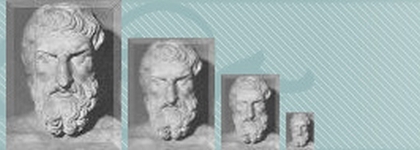“I have recently fallen head over heels in love, but my cynical friends keep telling me that love is nothing but a cocktail of pheromones, dopamine and oxytocin, and that these wear off after a couple of years. The thought scares me, it makes the whole thing seem meaningless. Is love really just brain chemistry?” – Jo, London.
.The essence of love, at least of passionate, romantic love, is revealed in its very grammar. We “fall” in love, not “wander” into it. We fall “head over heels”, often at “first sight” rather than on careful inspection. We fall in love, “madly, blind” to the other’s vices, not in rational appraisal of their virtues.
Romantic love is overwhelming, irresistible, ballistic. It is in control of us more than we are ever in control of it. In one sense a mystery, it is in another pure simplicity – its course, once engaged, predictable and inevitable, and its cultural expression more or less uniform across time and space. The impulse to think of it in terms of simple causes precedes science. Consider the arrow of Cupid, the potion of a sorcerer – love seems elemental.
Yet love is not easily conquered by science. Sex pheromones, chemicals designed to broadcast reproductive availability to others, are often quoted as key instruments of attraction. It is an appealing idea. But while pheromones play an important role in insect communication, there is very little evidence that they even exist in humans.
But if a chemical can signal attraction outside the body, why not inside it? The neuropeptide oxytocin, often inaccurately described as a “bonding hormone” and known for its role in lactation and uterine contraction, is the leading candidate here. This has been extensively studied, mainly in the prairie vole whose monogamy and public displays of affection make it an ideal model. Blocking oxytocin disrupts the pair bonding that here is a surrogate for love, and makes the voles more restrained in their emotional expressions. Conversely, inducing an excess of oxytocin in other, non-monogamous vole species blunts their taste for sexual adventure. In humans, though, the effects are much less dramatic – a subtle change in the romantic preference for the familiar over the new. So oxytocin is far from proven to be essential to love.
Of course, even if we could identify such a substance, any message – chemical or otherwise – needs a recipient. So where is the letterbox of love in the brain? And how is the identity of the “chosen one” conveyed, given that no single molecule could possibly encode it?
When romantic love is examined with imaging of the brain, the areas that “light up” overlap with those supporting reward-seeking and goal-oriented behaviour. But that parts of our brains are set ablaze by one thing does not tell us much if they are just as excited by a very different, other thing. And the observed patterns of romantic love are not that different from those of maternal bonding, or even from the love of one’s favourite football team. So we can only conclude that neuroscience is yet to explain this “head over heels” emotion in neural terms.
Do we simply need more experiments? Yes, is usually the scientist’s answer, but this assumes love is simple enough to be captured by a mechanistic description. Each reproductive decision can be neither simple nor uniform, for we cannot be allowed to be guided by any single characteristic, let alone the same one. Universally attractive though tallness might be, if biology allowed us to select on height alone we would all be gigantic by now. And if the decisions have to be complex, so must the neural apparatus that makes them possible.
While this explains why romantic attraction must be complex, it doesn’t explain why it can feel so instinctual and spontaneous. Wouldn’t a cool, detached rationality be better? The answer is “no”. Rationality evolved later that our instincts and allows us to detach ourselves from the grounds for a decision so that others can record, understand and apply it independently of us.
Nor is instinct ”simple”and inferior to careful deliberation. It is actually more sophisticated than rational analysis, for it brings into play a wider array of factors than we could ever hold simultaneously in our conscious minds. The truth of this stares us in the face: think how much better we are at recognising a face compared with describing it. Why should the recognition of love be any different?
Ultimately, if the neural mechanisms of love were simple, you should be able to induce it with an injection, to extinguish it with a scalpel while leaving everything else intact. The cold, hard logic of evolutionary biology makes this impossible. Were love not complicated, we would never have evolved in the first place.
That said, love – like all our thoughts, emotions and behaviours – arises from very complex physical processes in the brain. Yet to say that love is “just” brain chemistry is like saying Romeo and Juliet is “just” words – it misses the point. Like art, love is more than the sum of its parts. It is exhilarating!
So those of us lucky to experience its chaos should let ourselves be carried by the waves. And if we end up wrecked on the surf-hidden rocks, we can draw comfort from knowing reason would have got us no further. (BBC News Feb 14 2020).
My comment: To quote the words of a lovely popular love song by Ray Noble: “Love is the sweetest thing. What else on earth could ever bring such happiness to everything?”
